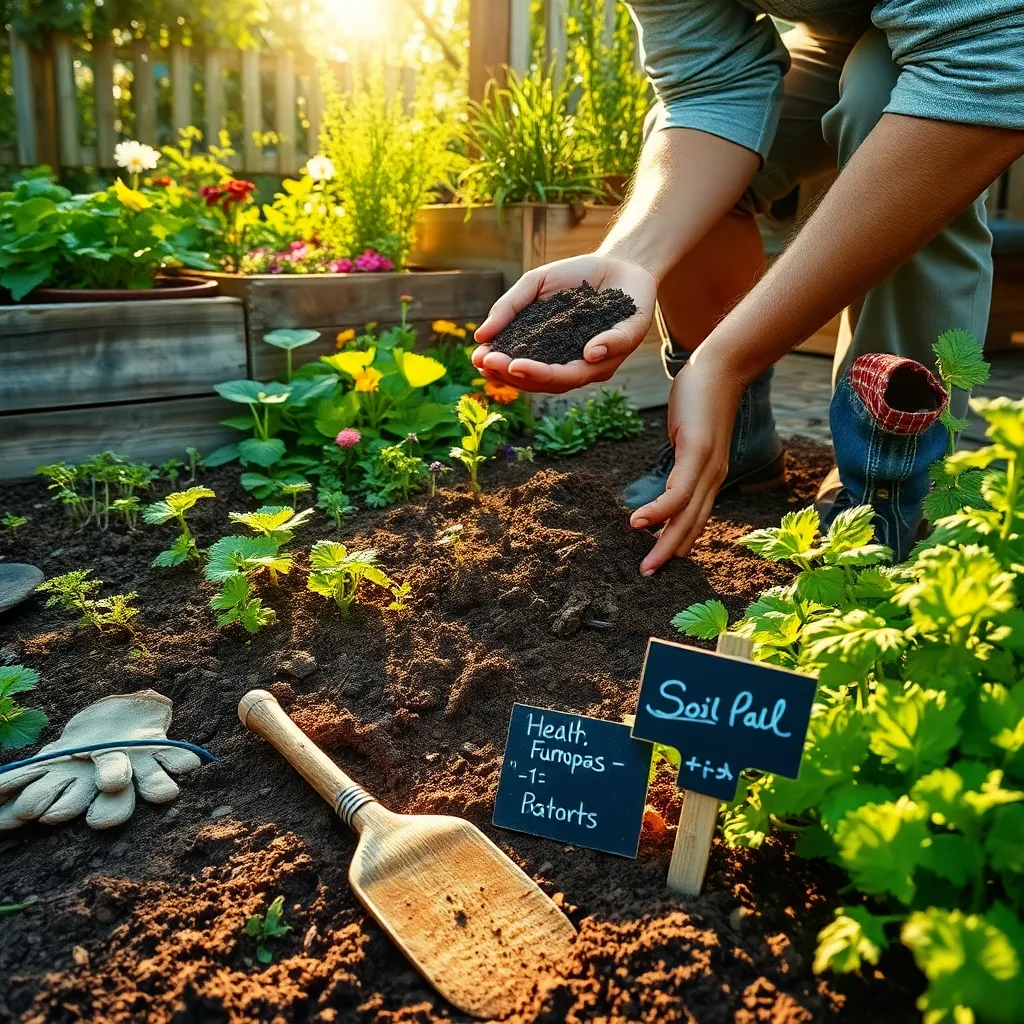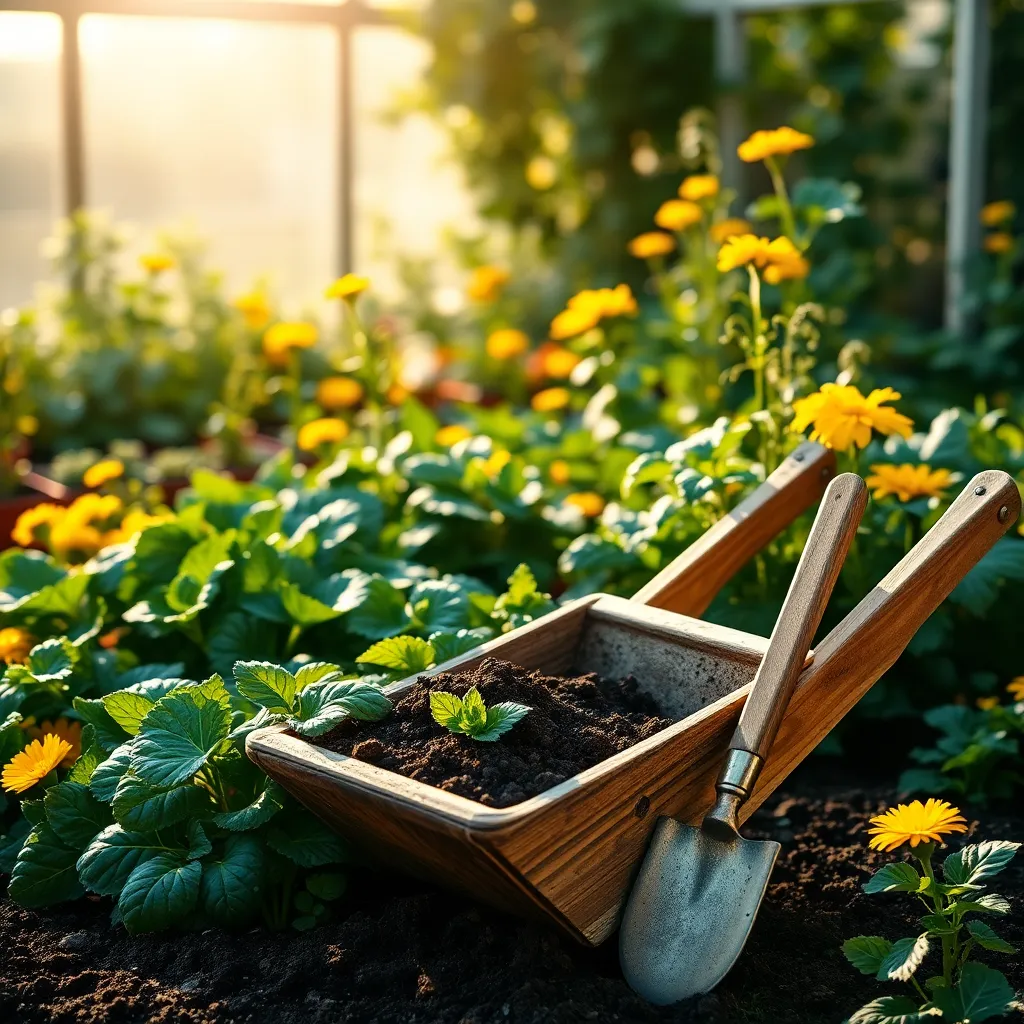In the vibrant world of gardening, the secret to lush, thriving plants often lies beneath the surface—in the soil. Whether you’re embarking on your first gardening adventure or have years of green-thumb expertise, understanding natural fertilizers can transform your garden into a flourishing oasis. These organic powerhouses are not just for seasoned horticulturists; they offer a sustainable, eco-friendly way to enrich your soil and invigorate your plants, making gardening both accessible and rewarding for everyone.
Natural fertilizers are the unsung heroes of sustainable gardening, offering a bounty of nutrients without the harsh chemicals found in synthetic options. In this article, we’ll explore the diverse types of natural fertilizers, from compost and manure to bone meal and seaweed, and how each one can uniquely benefit your garden. You’ll learn practical tips on how to apply these fertilizers effectively, ensuring that your plants receive the nourishment they need to grow robustly. With this knowledge, you can cultivate a garden that’s not only beautiful but also nurturing to the environment and your well-being.
Identify Your Soil Needs

Understanding your soil needs is the first step in using natural fertilizers effectively. To begin, perform a simple soil test to determine the pH level and nutrient composition of your garden soil.
A basic soil test can be done using a home testing kit, which is both affordable and easy to use. These kits typically include instructions on how to collect samples and interpret results, enabling you to tailor your fertilizer choices to your soil’s specific requirements.
Once you’ve identified your soil’s characteristics, you can select the right natural fertilizers to enhance its quality. For instance, if your soil is too acidic, adding lime can help balance the pH, while compost or well-rotted manure can boost nutrient levels.
For gardeners dealing with sandy soil, incorporating organic matter such as peat moss or aged manure can improve water retention. Conversely, if you have clay soil, adding gypsum and coarse sand can enhance drainage and aeration, creating a better growing environment.
Advanced gardeners might consider using cover crops like clover or vetch to naturally enrich the soil and fix nitrogen. This not only improves soil fertility but also reduces the need for synthetic fertilizers, promoting a more sustainable gardening practice.
Select Appropriate Natural Fertilizer

Once you understand your soil’s needs, choosing the right natural fertilizer becomes essential. Different plants and soil types require specific nutrients, so it’s crucial to match your fertilizer accordingly.
Compost is a versatile option that enriches soil with a broad spectrum of nutrients. It is especially beneficial for improving soil structure and water retention in sandy soils.
For a boost in nitrogen, consider using **alfalfa meal** or **blood meal**, which are excellent for leafy vegetables like lettuce and spinach. When applying these fertilizers, remember to mix them into the top few inches of soil to enhance absorption.
Gardeners growing fruiting plants such as tomatoes and peppers might benefit from **bone meal**, which is rich in phosphorus. This helps support strong root development and flower production, ensuring a bountiful harvest.
For those looking to improve potassium levels, **kelp meal** can be a great choice. It’s particularly effective for flowering plants and can be applied as a top dressing or mixed into the soil before planting.
Always follow recommended application rates to avoid over-fertilizing, which can harm plants. Regular soil testing can help you monitor nutrient levels and adjust your fertilization practices accordingly.
Apply Fertilizer Evenly

When applying natural fertilizer, it’s crucial to distribute it evenly across the soil surface. This ensures that your plants receive a consistent supply of nutrients, which promotes balanced growth and prevents nutrient burn in concentrated areas.
Begin by dividing your garden into manageable sections and calculate the amount of fertilizer needed for each area. Using a spreader tool, like a hand-held broadcast spreader, can help achieve uniform coverage over the designated zones.
For gardeners working with smaller plots or containers, hand application may be more practical. In this case, sprinkle the fertilizer lightly and evenly over the soil, ensuring you cover the entire area without creating piles.
It’s also beneficial to incorporate the fertilizer into the soil to enhance nutrient absorption. This can be done by gently raking the soil surface or using a hoe to mix the fertilizer into the top few inches, especially for heavy feeders like tomatoes and peppers.
Incorporate Fertilizer into Soil

After applying your natural fertilizer, it’s crucial to incorporate it into the soil properly to maximize its benefits. Use a garden fork or a hoe to gently mix the fertilizer into the top 2 to 3 inches of soil, ensuring even distribution without disturbing the plant roots.
This technique aids in faster nutrient absorption and reduces the risk of fertilizer runoff. For clay or compacted soils, consider aerating the soil first to enhance the penetration of nutrients and water.
If you’re working with sandy soils, be mindful that nutrients can leach away more quickly. In such cases, it might be beneficial to add a layer of organic matter, like compost, to help retain moisture and nutrients in the soil.
For gardeners with established plants, take extra care when incorporating fertilizer to avoid damaging root systems. Use a hand cultivator around the base of the plants to gently incorporate the fertilizer while leaving the roots undisturbed.
- Use organic fertilizers like well-rotted manure or fish emulsion for a slow, steady release of nutrients.
- Incorporate the fertilizer during the growing season when plants are actively taking up nutrients.
- Water the area thoroughly after incorporating the fertilizer to help dissolve and distribute nutrients.
- Adjust the depth of incorporation based on the specific needs of your plants and soil type.
Monitor Plant Health Regularly

Observing your plants closely is key to maintaining their health and ensuring they benefit fully from natural fertilizers. Regular monitoring helps you catch any issues early, whether related to pests, diseases, or nutrient deficiencies.
Begin by checking the leaves for any discoloration or unusual spots, as these can indicate nutrient imbalances. For example, yellowing leaves might suggest a nitrogen deficiency, while purple leaves could signal a lack of phosphorus.
Soil moisture is another crucial factor that affects plant health, especially after applying fertilizers. Ensure your soil maintains a consistent moisture level, avoiding extremes of dryness or sogginess, as both can hinder nutrient uptake.
For a more advanced approach, consider testing your soil’s pH levels periodically. This helps ensure that your natural fertilizers are effectively enhancing the soil’s fertility and not being locked up due to unfavorable pH conditions.
Conclusion: Growing Success with These Plants
In exploring the enriching world of natural fertilizers, we uncovered five key concepts: understanding the types of natural fertilizers, recognizing their benefits for soil health, learning how to apply them effectively, discerning the environmental advantages, and discovering how they foster sustainable growth. These principles mirror the nurturing practices essential in relationships, where understanding, communication, and sustainability pave the way for flourishing connections.
As an actionable next step, choose one natural fertilizer aspect to implement in your gardening routine or relationship today—whether it’s deepening your understanding or trying a new application method. This small change can have a profound impact on your growth journey, much like a thoughtful gesture or open conversation can in relationships.
Remember, nurturing your garden and relationships requires ongoing effort and dedication. Save or bookmark this article now to revisit these insights whenever you need a boost in your gardening or relational ventures. As you continue to cultivate both, envision a future where your efforts yield vibrant results—lush gardens and thriving relationships that stand the test of time. Embrace the journey, knowing each step forward is a step toward enduring success.
